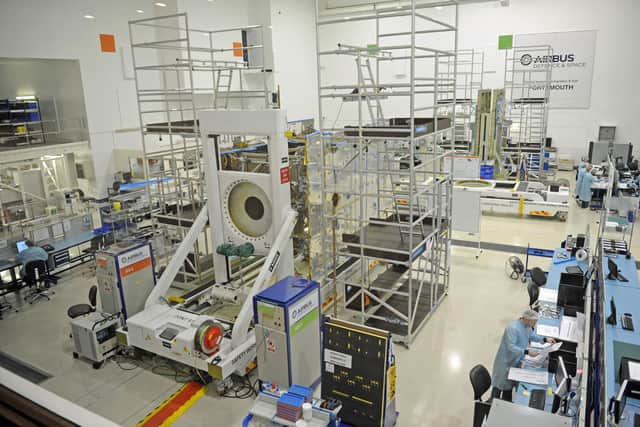Portsmouth-built satellite made by Airbus for Inmarsat 'could be used to power flying taxis'
and live on Freeview channel 276
The satellite firm’s I-6 F1 is due to lift off from Japan on Wednesday afternoon on board a launch vehicle built by Mitsubishi Heavy Industries.
The satellite is the largest commercial comms satellite ever launched, Inmarsat said.


Advertisement
Hide AdAdvertisement
Hide AdIt is the firm’s first hybrid satellite, carrying two different communication network payloads, which will boost infrastructure networks such as maritime and aviation safety, remote agriculture and emergency response, and also in-flight WiFi on planes and secure communications for heads of state.
Inmarsat chief executive Rajeev Suri said that the satellite had been designed to stay in orbit for at least 15 years, and could eventually be used to support not just present-day technology but also future innovations such as the networks needed to deploy flying taxis.
‘What it will offer our customers is a lot more capacity compared to our previous generations satellites,’ he said.
‘And the beauty is that these satellites have got a minimum lifespan of around 15 years so it will go the 2040s and beyond, which means that it will not only support the applications and use cases that we know and see today, but also new ones that we haven’t fully comprehended or even imagined, so it’s very exciting.’
Advertisement
Hide AdAdvertisement
Hide AdThe I-6 F1 is the first of two satellites to be launched, and Mr Suri said the network coverage provided could allow people to make video calls during a flight or stream films from a merchant ship in the middle of the ocean.
This coverage in remote areas could also be used to connect autonomous vehicles or flying taxis and the array of sensors used to drive them in the future, he said.
‘It could be that when we have autonomous taxis in the air, they would be supported in urban centres by 5G, but outside of the urban areas, this (the satellite) could be the primary way to connect.’
Mr Suri described Wednesday’s launch as a “multinational effort”, but one that also represented “the best of British technology”.
Advertisement
Hide AdAdvertisement
Hide Ad‘The satellites are manufactured in Stevenage and Portsmouth, but in concert with other teams like Airbus – so it was finally assembled in Toulouse,’ he said.
‘It will be monitored from our operating centre in London and it’s being launched together with Mitsubishi Heavy Industries from Kagoshima in Japan.’
